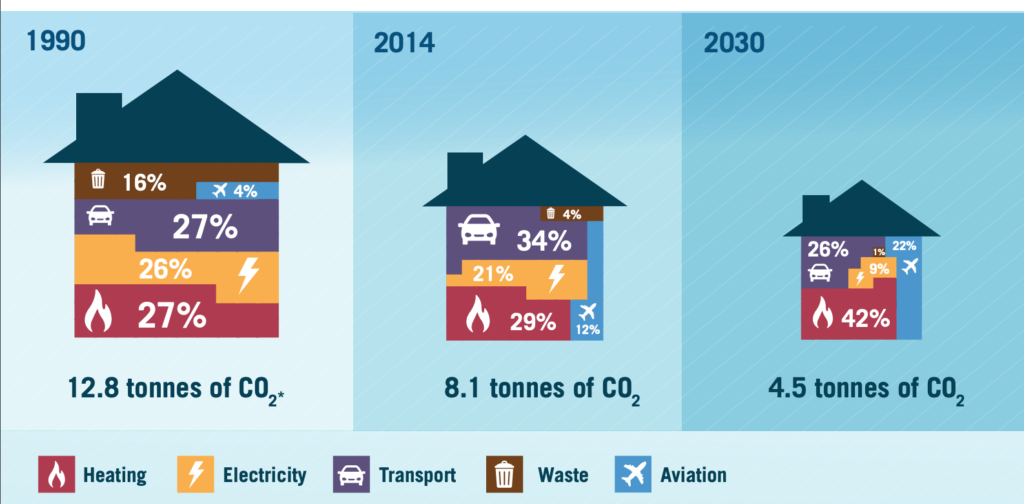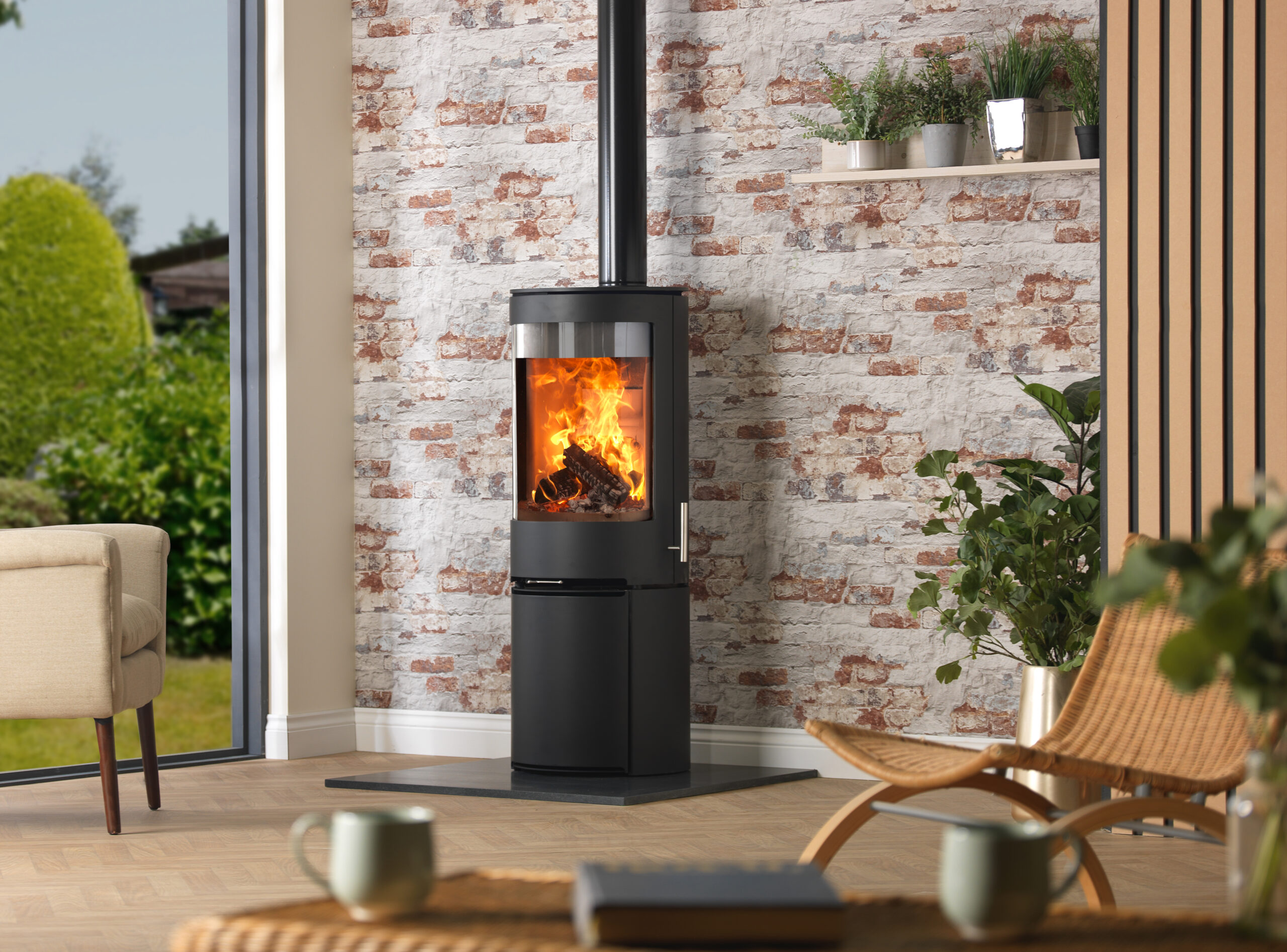The drive for eco-friendly homes is becoming more prevalent, and for good reason. Global temperatures are hitting new records. April 2024 was the hottest on record, and sea temperatures are continually rising. There is also worrying evidence that we could be on track to see a 2.5c increase in global temperatures despite the global target being set at 1.5c — more info.
Now is a good time to make your home more eco-friendly!

As we further progress towards creating a greener, more sustainable future, homes and the way we heat and design them is coming under greater scrutiny. It’s been reported that around 40% of the UK’s emissions come from domestic households, with less efficient older properties being the main offenders.
The CO2 reduction journey from 1990 to 2030 – Produced by The Committee on Climate Change:

How do I Make My Home Eco-Friendly?
Popular Tips:
Setting Your Room Temperatures:
Make sure you understand your heating controls and set them to only heat the rooms you need when you need them and not above the required temperature. Investing in a room thermostat and thermostatic radiator valves could save you £75 a year, and reduce your carbon emissions by 320kg.
Local Space Heating
According to the Energy Saving Trust, residents can save around £80 a year for every 1C reduction in thermostat temperature. By using local space heating, such as a wood-burning stove, people can turn their thermostat right down and use a local space heater to help maintain a comfortable room temperature. The rest of the house they’re not in will still have some degree of warmth, perhaps not enough to relax in during the evening, but warm enough when they go to bed.

Insulate Hot-Water Pipes:
Insulating exposed hot water pipes and also your hot water cylinder (if you have one) is a quick win. According to the Energy Saving Trust, around 33% of heat in an insulated home is lost through the walls. Installing solid-wall insulation could save a gas-heated semi-detached home around 930kg of carbon dioxide emission a year.
Heater Pump Switch:
25% of homes currently use oil heating, and 33% of homes using electric heating could switch to a heat pump, saving a huge 3.2 tonnes of CO2 per year and 0.8 tonnes of CO2 per year, respectively.
Managing Waste:
By reducing and sorting waste, emissions from the average home could fall by 0.25 tonnes of CO2 per year.
Seal your windows and doors and other gaps:
If you don’t already have double glazing, you could go all out and fit it. A real cost-effective, quick win here is to look for any gaps and drafts in windows and doors and anywhere else and seal them. It’s a small thing, but small things all add up.
Switch to energy-efficient bulb:
Have a supply of high-efficiency bulbs. So when you need to replace your old bulbs, you’re slowly driving down your energy costs and helping the environment. High-energy bulbs are not only more efficient but also last longer. An average home could save up to 65kg of CO2 a year by making the switch.
Swap your desktop for a laptop:
When it’s time to update your computer, choosing a laptop over a desktop computer could save up to £20 and 35kg of CO2 every year. Turning off your computer equipment at the plug, instead of leaving it on standby, could save a typical home around £6 and 20kg of CO2 every year.
Our Range:
All the fires in our range, gas, electric and wood, are designed to be efficient and offer among the very best energy efficiencies currently available. View our range here:








